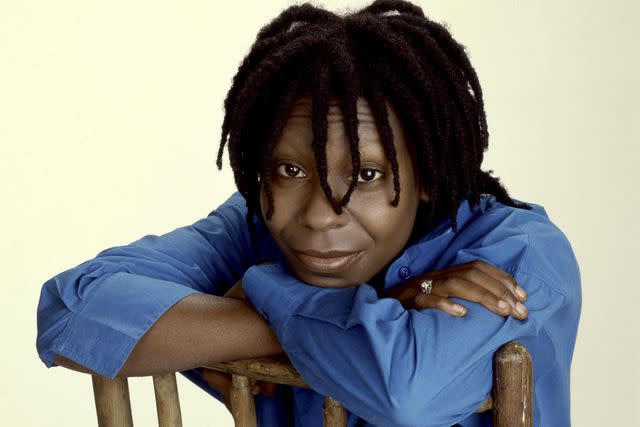White hairdressers saw Whoopi Goldberg's dreads and asked ‘What are we supposed to do with this s---?’
“As soon as they started to spray your hair with water, you knew it was game over and that you would have to make a stink. And I did.”
Whoopi Goldberg is sharing her experience with racism in the hair and makeup departments on film sets.
In her new book Bits and Pieces: My Mother, My Brother, and Me, the Ghost star discusses the prejudice she faced on predominantly white productions. “The producers or stylists would look at my hair, which I had been wearing in dreads since the late ‘70s, and say, ‘What are we supposed to do with this s---?’” Goldberg recalls. ”I guess that every Black actress they had worked with before me had either straightened her hair or worn it very short or worn a wig because that’s what made the film people comfortable. I wasn’t about to change my hair.”
“People would continue to say things to me like, ‘Oh, you’re so articulate,’ as if that was a pleasant surprise,” she remembers.

Bonnie Schiffman/Getty Images
Whoopi GoldbergRelated: Whoopi Goldberg recalls inheriting land on Marlon Brando's island after his death in her new memoir
Goldberg also explains how her friend and hair stylist, Julia Walker, offered sound advice after the actress expressed her frustration. “Julia said, ‘They don’t know any better. They don’t know anyone like you,’” Goldberg writes. “‘So to them, you are this kind of unicorn, somebody they’ve never come across. You don’t quiet your mouth when you have something to say. I think you are very hard for them to understand. They thought you should be a lot easier to deal with than you are.’”
“I came to understand that Julia was also a first for many people because she was a Black woman who could do any actor’s hair,” Goldberg continues. “Rarely did they ever let her, though. The stylist was usually someone white who was limited in what they could do because they couldn’t do Black hair. Often folks would say they could, but as soon as they started to spray your hair with water, you knew it was game over and that you would have to make a stink. And I did.”
Want more movie news? Sign up for Entertainment Weekly's free newsletter to get the latest trailers, celebrity interviews, film reviews, and more.
Goldberg writes about how her hair and makeup team helped Hollywood improve its treatment of Black talent. “My makeup man, who comes from makeup royalty, was Mike Germain, and he agreed with Julia,” she says. “We spent many great years together, and I watched the two of them teach an industry that really didn’t have much of a clue about black skin or hair to help move the needle forward. This was in the 1980s and 1990s, a long time ago, it seems, but Julia was right about a few things in all of this.”
Goldberg also says that her expectations for hair and makeup were skewed after her first major Hollywood film. “Because the cast of The Color Purple was primarily Black actors, the crew knew how to work with us, from the lighting to the makeup to the hair,” she said. “When I started making movies after that, I had to give people time to get used to me. I asked a million questions. I stayed on set because there’s nothing better than watching the how-to of movie making. Everyone has their job. I loved being part of it. But I didn’t see a lot of people of color, nor did I see a lot of women.”
Goldberg’s book Bits and Pieces: My Mother, My Brother, and Me, which highlights the actress’ relationship with her family, is now available from booksellers everywhere.
Read the original article on Entertainment Weekly.

 Yahoo News
Yahoo News 
